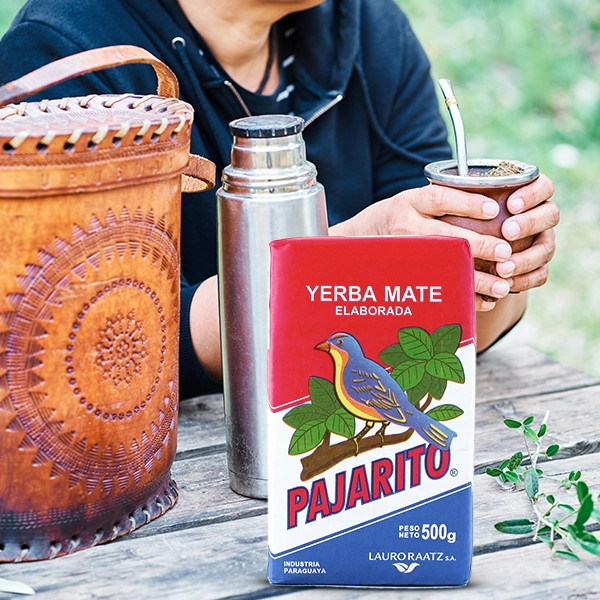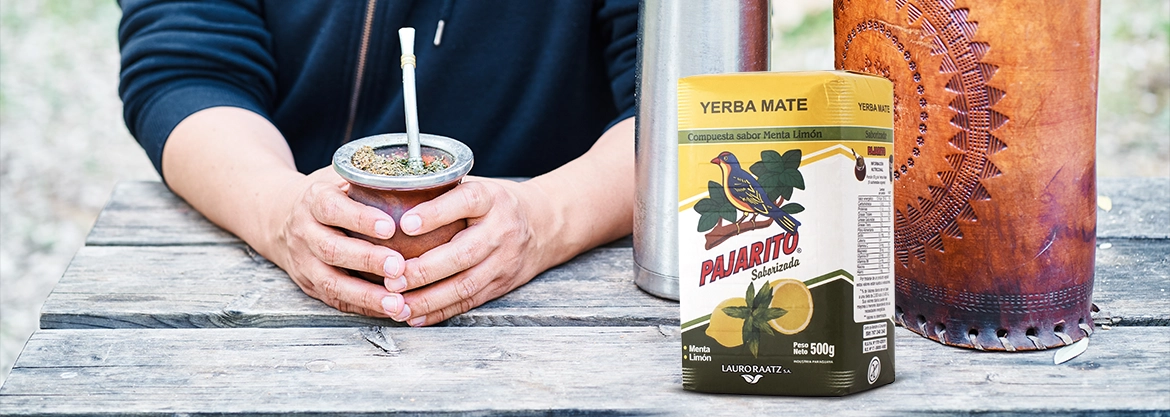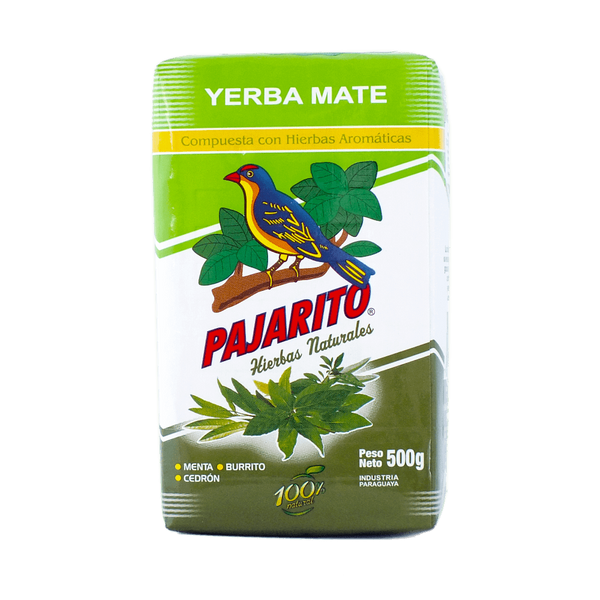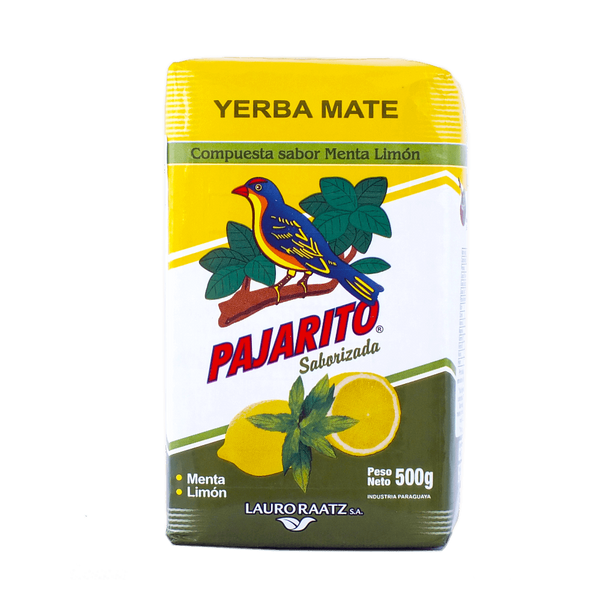Pajarito – the Mercedes of yerba mate

A luxury good can have many faces. Fashion enthusiasts know there are clothes from shopping malls available for everyone, but also exclusive pieces from boutiques by famous designers. In the car world, we see commonly spotted Fiats and Volkswagens, alongside top-tier sports models like Mercedes. The world of yerba mate also has its equivalent of a Mercedes or a world-renowned designer outfit. That equivalent is yerba mate Pajarito!
Summary:
- The birth of the 'little bird' – the history of Pajarito yerba mate
- The reasons behind Pajarito's exclusivity
- Pajarito yerba mate – for whom?
- Types of Pajarito available in our shop
The birth of the 'little bird' – the history of Pajarito yerba mate
The word pajarito means... “little bird” in Spanish. It’s a symbol that has accompanied the Paraguayan brand almost from its very beginnings. This exceptional yerba mate is produced in the southeastern part of Paraguay, specifically in the Itapúa province. The little bird hatched over 65 years ago – exactly in 1956 – and its creation is credited to a Paraguayan couple, Lauro and Sara Raatz, the founders of Lauro Raatz S.A. This thriving company has been exporting this most exclusive type of yerba mate worldwide for nearly 40 years. Pajarito is recognised on every continent. In Europe, this luxury yerba mate has been available since 2007.
Pajarito offers an intense, smoky flavour, full of characteristic bitterness and the aroma of a crackling fire. It’s inimitable and impossible to ignore. Its quality and reputation result from hard work, experience, and over 65 years of tradition. The history of the most recognisable Paraguayan brand began in Bella Vista, located in the southern part of Itapúa province. On their family plantation, Lauro and Sara began cultivating yerba mate, which they soon started selling. The early days were tough, and sales initially took place in a small pantry, but demand kept increasing. Soon, the budding enterprise was producing around 300 packs of mate tea daily, packaged in brown paper with a distinctive red stamp. In the 1970s, the company introduced new packaging – known to this day – featuring the image of a little bird in red, white, and blue, the national colours of Paraguay. Before long, Lauro Raatz S.A. became a true pride of the South American nation, a position it maintains today, leading Paraguayan yerba mate producers.

The reasons behind Pajarito's exclusivity
Just as the exclusivity of a Mercedes or Versace clothing didn’t arise out of nowhere, the high standing of Pajarito yerba mate also has its reasons. The first is the place where Ilex paraguariensis plant grows, which forms the basis of the “Little Bird”. The Itapúa province in Paraguay boasts a specific climate that gives the plant’s leaves their distinctive taste and aroma. No less important is the extensive, over 65-year experience of the Raatz family in producing yerba mate. Thanks to this experience, they’ve assembled a team of outstanding experts and dedicated professionals who work to the highest standard. They ensure the leaves are meticulously selected, with only the best, most aromatic ones full of vitamins and minerals making it into production.
How is Pajarito yerba mate made and what does it taste like?
Pajarito is loyal to tradition. The leaves and twigs of yerba mate, carefully selected and quality-checked, are processed using the traditional barbacuá method developed centuries ago by the Guarani Indians. Yerba mate is dried over fire and smoke, right above a glowing hearth. After drying, the leaves and twigs are crushed and sieved to ensure the final product meets stringent requirements and standards. Before packaging, yerba mate is aged, during which it gains exceptional character and unparalleled strength. Yerba mate Pajarito is “rested” for about 20 to 24 months. During this time, it acquires unique properties and unrivalled flavour-aromatic qualities. Served as a brew, it not only tastes excellent but also provides a powerful dose of energy, nourishment, and a full range of vitamins and minerals. The Pajarito yerba mate producer clearly states the caffeine content and nutritional values on each package. In its traditional variety, 100 grams of dried leaves brewed in 1 litre of water contains, among other things, 26.36 kcal, 790 mg of caffeine, and 4.96 mg of vitamin C.
Pajarito yerba mate – for whom?
The Paraguayan brand with the bird in its logo is a true icon of yerba mate, and every mate tea enthusiast – regardless of experience – has likely heard of it. Pajarito yerba mate is a Paraguayan classic, and its quality is confirmed by countless positive reviews. It’s worth trying at least once during your yerba mate journey. Its bold flavour leaves a lasting impression, yet the intense bitterness and smoky note typical of Paraguayan yerba mates might be a bit too strong for beginners. We recommend it for those already acquainted with the robust character of yerba mate and who don’t grimace with every sip. Properly brewed Pajarito yerba mate rewards with a multidimensional drinking experience. How should it be brewed? For the hot version, simply pour water at a temperature of around 70-80°C over the leaves and wait a few minutes for it to steep. True to Paraguayan tradition, it’s also excellent served cold as tereré, using ice-cold water. The used leaves can be re-brewed multiple times, revealing surprising nuances in taste and aroma with each infusion.
Types of Pajarito. Where can you buy it?
In our store, the “Little Bird” yerba mate is available in several variations – both in loose-leaf form and in tea bags (as instant yerba mate). For loose-leaf varieties, the following types are available: Pajarito Elaborada con Palo Tradicional (natural, classic version with twigs, no additives), Pajarito Selección Especial (natural, specially selected), Pajarito Menta Limón (with mint and lemon), Pajarito Compuesta con Hierbas (with peppermint, cedron, and burrito), and Pajarito Orgánica (grown in the rainforest without artificial fertilisers). The instant yerba mate is available in the traditional variety, as well as with hints of vanilla, peach, and an apple-cinnamon blend.
Sources of information:
- Wikipedia: Yerba mate.
- pajarito.com.py.




